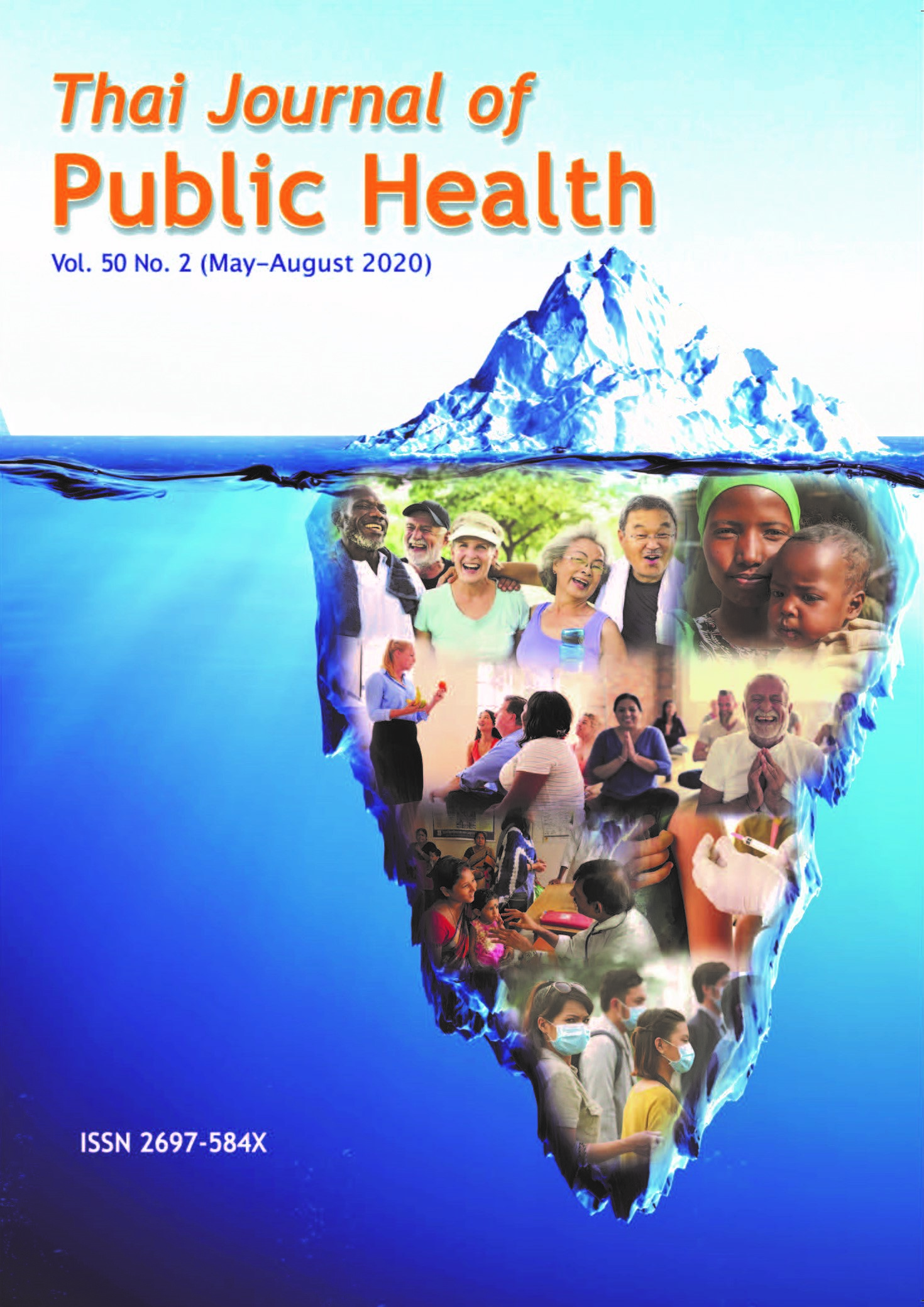Obesity and the Risk of Breast Tumors in Indonesian Women based on Clinical Breast Examination
Keywords:
Obesity, Breast tumor, , Non-communicable diseaseAbstract
Obesity in women is often associated with breast cancer. Obese women are at greater risk of breast cancer even though many other factors also influence the degree of risk. This analysis aimed to determine the role of obesity and overweight in breast tumor risk among Indonesian women who participated in the 2016 Non-Communicable Diseases Research Project in Indonesia. This research used a cross-sectional survey design, with national urban representation. We selected households by multi-stage sampling. Each selected household was assigned one woman who met the criteria using the Kish table. The number of subjects analyzed were 37,984 people, aged 25-64 years. Breast tumor was examined by clinical breast examination by trained health personnel. Data were analyzed using chi square and logistic regression. After controlling for several sociodemographic and reproductive variables and history of individual and family cancers, abdominal obesity was a breast tumor protection factor (OR = 0.803; 95% CI 0.698-0.922, p = 0.002). Abdominal obesity is a protective factor that plays a role in breast tumors in women aged 25-64 years in Indonesia. Women, especially those who have not entered menopause, are still encouraged to do regular physical activity to maintain an ideal body weight for optimal general health.
References
2. Vona-Davis L, Rose DP. The obesity-inflammation-eicosanoid axis in breast cancer. J Mammary Gland Biol Neoplasia 2013; 18: 291-307.
3. Chang Y, Schechter CB, van Ravesteyn NT, Near AM, Heijnsdijk EAM, Adams-Campbell L, et al. Collaborative modeling of the impact of obesity on race-specific breast cancer incidence and mortality. Breast Cancer Res Treat 2012; 136(3): 823-35.
4. Soguel L, Durocher F, Tchernof A, Diorio C. Adiposity, breast density, and breast cancer risk: epidemiological and biological considerations. Eur J Cancer Prev 2017; 26(6): 511-20.
5. Saxena NK, Sharma D. Multifaceted leptin network: the molecular connection between obesity and breast cancer. J Mammary Gland Biol Neoplasia 2013; 18: 309-20.
6. Yu H, Rohan T. Role of insulin-like growth factor family in cancer development and progression. J Natl Cancer Inst 2000; 92(18): 1472-89.
7. Anderson KN, Schwab RB, Martinez ME. Reproductive risk factors and breast cancer subtypes: a review of the literature. Breast Cancer Res Treat 2014; 144(1): 1-10.
8. Alsolami FJ, Azzeh FS, Ghafouri KJ, Ghaith MM, Almaimani RA, Almasmoum HA, et al. Determinants of breast cancer in Saudi women from Makkah region: a case-control study (breast cancer risk factors among Saudi women). BMC Public Health 2019; 19(1): 1554.
9. National Institute of Health Research and Development Ministry of Health of Indonesia. Non Communicable Disease Research Report. Indonesia; 2016. (In Indonesian).
10. World Health Organization. Waist circumference and waist – hip ratio: report of a WHO expert consultation 8-10 December 2008. Geneva: WHO; 2011.
11. World Health Organization (WPRO) The International Association for the Study of Obesity and the International Obesity and Task Force. The Asia - Pacific perspective: redefining obesity and its treatment: Health Communication. Australia: Pty Limited; 2000
12. National Cancer Institute of NIH. NCI Dictionary of Genetics Terms 2018. Available from: https://www.cancer.gov/publications/dictionaries/genetics-dictionary/def/second-degree-relative. Accessed: 14 July, 2018.
13. MacLean PS, Giles ED, Johnson GC, McDaniel SM, Fleming-Elder BK, Gilman KA, et al. A surprising link between the energetics of ovariectomy-induced weight gain and mammary tumor progression in obese rats. Obesity 2010; 18(4): 696-703.
14. Coll JL, Bibiloni Mdel M, Salas R, Pons A, Tur JA. Prevalence and Related Risk Factors of Overweight and Obesity among the Adult Population in the Balearic Islands, a Mediterranean Region. Obesity Facts 2015; 8(3): 220-33.
15. NIHRD (National Institute of Health Research and Development) Ministry of Health of Republic of Indonesia. Indonesia Basic Health Research 2018. Jakarta: NIHRD Publishing Agency; 2018. p. 340–41.
16. Lewitt MS, Hilding A, Brismar K, Efendic S, Ostenson CG, Hall K. IGF-binding protein 1 and abdominal obesity in the development of type 2 diabetes in women. Eur J Endocrinol 2010; 163(2): 233-42.
17. Cleary MP. Impact of obesity on development and progression of mammary tumors in preclinical models of breast cancer. J Mammary Gland Biol Neoplasia 2013; 18: 333-43.
18. Colditz GA, Bohlke K, Berkey CS. Breast cancer risk accumulation starts early: prevention must also. Breast Cancer Res Treat 2014; 145(3): 567-79.
19. Kim KE, Chandrasekar E, Lam H. Socio-demographic factors and cancer screening among foreign-born Chinese, Cambodian and Vietnamese Women. Race Soc Probl 2014; 6: 4-14.
20. Gonzalez P, Castaneda SF, Mills PJ, Talavera GA, Elder JP, Gallo LC. Determinants of breast, cervical and colorectal cancer screening adherence in Mexican-American women. J Community Health 2012; 37(2): 421-33.
21. Cui Y, Hargreaves M, Draje J, Wen W, Munro H, Signorello L, et al. Mammography Use in the Southern Community Cohort Study (United States). J Health Care Poor Underserved 2007; 18(4): 102-17.
22. Bray F, Ferlay J, Soerjomataram I, Siegel RL, Torre LA, Jemal A. Global cancer statistics 2018: GLOBOCAN estimates of incidence and mortality worldwide for 36 cancers in 185 countries. CA Cancer J Clin 2018; 68(6): 394-424.
23. McPherson K, Steel CM, Dixon JM. ABC of breast diseases. Breast cancer-epidemiology, risk factors, and genetics. BMJ 2000; 321(7261): 624-8.
24. Jemal A, Ward E, Thun MJ. Recent trends in breast cancer incidence rates by age and tumor characteristics among U.S. women. Breast Cancer Res 2007; 9(3): R28.
25. Schmidt S, Monk JM, Robinson LE, Mourtzakis M. The integrative role of leptin, oestrogen and the insulin family in obesity-associated breast cancer: potential effects of exercise. Obes rev: an official journal of the International Association for the Study of Obesity 2015; 16(6): 473-87.
26. Matthews S, Thompson H, Marchetti D. The Obesity-Breast Cancer Conundrum: An Analysis of the Issues. Int J Mol Sci 2016; 17(6): 989.
Downloads
Published
Issue
Section
License
Creative Commons License CC-BY-ND


